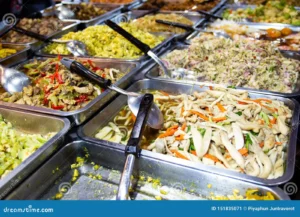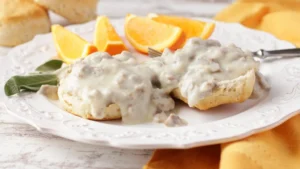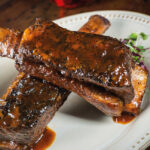Indian food cuisine is famed internationally for its complexity of flavors each soothing and stimulating to the senses. A huge a part of what offers Indian food its signature tastes is the liberal use of clean and dried spices.
But which ones exactly contribute to the renowned “heat” associated with Indian cookery? Let’s explore some of the key players.
Chilies are a staple in Indian delicacies and provide the main warmth in lots of curries and gravies. popular varieties used encompass Kashmiri chilies, chicken’s eye chilies, and dried red chilies.
Spices like cumin, coriander, turmeric, mustard seeds, fenugreek seeds, garlic, and ginger are usually used each fresh and in powdered form. Many have inherent spicy or peppery notes that intensify when roasted or fried before using.
Blending and Layering of Flavors:
Indian cooks aim to create layered flavors by blending different spices and herbs together carefully. Even a teaspoon of certain spice mixtures can deliver bold heat.
Heat is also added in incremental stages often chilies are infused in oil first before other ingredients are added one by one, each imparting its own spicy twist.
Geography and Climate:
India’s diverse climates are suited for growing different varieties of chilies. Fiery chilies were perhaps incorporated into the cuisine to aid digestion in hot environments.
Traditional Ayurveda practices believe spices boost digestion and health. Chilies mainly are revered for his or her anti bacterial and metabolism boosting effects.
Indian delicacies function spiciness stems from a clever balance of native spices and cooking strategies aimed to satisfy the palate as well as nourish the frame. Heat is both flavor and function in Indian dishes.
Meet The Powerhouse Trio: Chili Peppers, Ginger, and Garlic
Capsaicin is the active compound determined in chili peppers that creates the fiery sensation we understand as warmth. Indian cuisine incorporates chili peppers like cayenne, hen’s eye, and Kashmiri sorts to supply a warming chunk
Ginger lends more than just relief from sickness. Its peppery notes enhance curries, marinades and sauces. Finely grated or sliced, ginger’s zing cuts through rich fats and proteins.
Garlic too should not be overlooked. While adding savory aromas, its allice content provides some spicy depth to dishes. Minced, crushed or left as whole cloves, garlic enlivens any Indian preparation.
Additional Heat Makers In The Indian Pantry
| Spice | Attributes it Contributes to Dishes |
| Turmeric | Vibrant gold color and anti inflammatory properties. Commonly used to “temper” ingredients in pilafs and curries. |
| Cumin | Nutty roasted essence balances out chilies. Essential component in curry powder blends. |
| Coriander | Both leaf and seed impart layers of citrus, soap and warming spice. |
| Mustard Seeds | Popping seeds lend aroma, sharpness and just a touch of bite when heated. |
| Fenugreek | Distinctive celery and maple notes that deepen flavors and help moderate spiciness. |
The interplay of these spices creates the vibrant and complex base layers for curries. By itself, a particular spice may seem mild but together they form the harmonic foundation of Indian flavor palettes.
Techniques For Controlling The Heat Level
Cooked On A Bone Or On The Bone Enhances The Nutrition And Provides Juiciness.
Dry based recipes versus oil based ones will differ greatly in perceived spiciness. Simmering for an extended period allows chili compounds to break down and mellow. Quick sautés intensify heat levels. Dairy like yogurt, cream or paneer incorporates fat to blanch tongue receptors.
Regionally in India, proportions of ingredients vary for example Kashmiri Rogan josh tends towards gentler heat than vandals from Goa. Cooks modify recipes according to personal heat tolerance as well.
Frequently Asked Questions about Indian Food
Q:Why is food in India so spicy?
Spicy stimulates the taste buds, creating a sensation of heat and excitement,
Q:What ingredients make Indian food spicy?
Turmeric gives bright yellowish orange color to curries, while red chili peppers add a spicy kick to your favorite dishes. Mustard seeds, black pepper, and asafetida or hen also help lend their signature tastes to quite a few classical preparations like dal taka or Sāmbhar.
Q: Why do the spices seem to get hotter as the meal goes on?
The heat sensation is caused by capsaicin binding to pain receptors on the tongue. Called sensation adaptation, receptors become increasingly sensitive the longer capsaicin lingers. Drinking water or milk helps wash it away and temporarily stop the burn from intensifying.
Q: How do I tone down the heat in my Indian recipes?
Some strategies include increasing proportions of cooling spices like mint, cilantro and fenugreek. Opt for milder varieties of chilies. Soak dried chilies in water or milk before using to leach out capsaicin.
Omit seeds from fresh chilies, which contain the highest concentrations of heat compounds. Add dairy, starchy vegetables or cooked pulses as part of the meal which dilute the spiciness.
It depends on the dish, but the spiciest Korean food doesn’t get nearly as spicy as the spiciest Indian food.
Conclusion Of Indian Food
This article provided a comprehensive overview of the key spices that give Indian food its signature warmth and complexity of flavors.
It also explained cooking techniques and strategies for modulating the spiciness based on individual heat tolerance levels.














